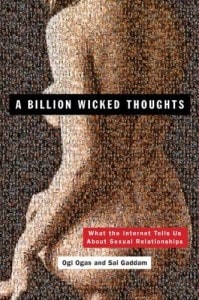Podcast: Play in new window | Download
 Richard Freiherr von Krafft-Ebing was a prominent German psychologist and forensic expert who published Psychopathia Sexualis in 1886. This was a European best seller, went into over a dozen editions in the author’s lifetime, and the book is now considered one of the first texts in sexology, the scientific study of sexuality.
Richard Freiherr von Krafft-Ebing was a prominent German psychologist and forensic expert who published Psychopathia Sexualis in 1886. This was a European best seller, went into over a dozen editions in the author’s lifetime, and the book is now considered one of the first texts in sexology, the scientific study of sexuality.
He worked in asylums and his case studies were mostly of the criminally insane. He studied the sexual behaviors of his inmates and created categories to understand the patterns he witnessed. His interpretations of their sexual behavior became the first textbook of early sexology and created categories of sexual deviance that are still with us today. The book was aimed at doctors and lawyers who wanted to diagnose and criminalize specific types of sexual deviance.
The book popularized the terms sadism (derived from the sexual behavior depicted in the novels of Marquis de Sade) and masochism (derived from the name of Leopold von Sacher-Masoch, author of Venus In Furs, an erotic story about male submission to a woman) and outlined the many variations of these patterns.
During this early period of sexology, doctors also began shifting focus away from abnormal behaviors (what people did) to categorizing people into identity categories (who people are.) It was suggested that sexual deviance was an inborn disorder rather than a simple behavior.
Categories of sexual deviance were created so that individuals could be diagnosed, treated and discussed. It is interesting to note that, because it was so explicit and a veritable catalog of sexual deviance, the book’s title page declares that “ The sale of the book is rigidly restricted to the members of the medical and legal professions.
In the introduction he writes:
The object of this treatise is merely to record the
various psychopathological manifestations of sexual life in
man and to reduce them to their lawful conditions. This
task is bj no means an easy one, and the author is well
aware of the fact that, despite his (varied) far-reaching
experience in psychiatry and criminal medicine, he is yet
unable to offer anything but an imperfected system.The importance of the subject, however, demands
scientific research on account of its forensic bearing and
its deep influence upon the common weal. The medical
barrister only then finds out how sad the lack of our
knowledge is in the domain of sexuality when he is called
upon to express an opinion as to the responsibility of the
accused whose life, liberty and honour are at stake. He
then begins to appreciate the efforts that have been made
to bring light into darkness.
Like most scientists of his time, Krafft-Ebing considered procreation the purpose of sexual desire and thought that any form of recreational sex was a perversion of the sex drive. “With opportunity for the natural satisfaction of the sexual instinct, every expression of it that does not correspond with the purpose of nature, propagation,must be regarded as perverse.”
The first chapter of the book begins:
The propagation of the human race is not left to mere
accident or the caprices of the individual, but is guaran-
teed by the hidden laws of nature which are enforced by
a mighty, irresistible impulse. Sensual enjoyment and
physical fitness are not the only conditions for the en-
forcement of these laws, but higher motives and aims,
such as the desire to continue the species or Ihe individu-
ality of mental and physical qualities beyond time and
space, exert a considerable influence. Man puts himself
at once on a level with the beast if he seeks to gratify
lust alone, but he elevates his superior position when by
curbing the animal desire he combines with the sexual
functions ideas of morality, of the sublime, and the beau-
tiful.If man were deprived of sexual distinction and the
nobler enjoyments arising therefrom, all poetry and prob-
ably all moral tendency would be eliminated from his life.Sexual life no doubt is the one mighty factor in the
individual and social relations of man which disclose his
powers of activity, of acquiring property, of establishing a
homo, of awakening altruistic sentiments towards a person
of the opposite sex, and towards his own issue as well as
towards the whole human race.
He defined sadism as lust aroused by cruelty, and masochism aslust aroused by being the object of cruelty.
Coupled with perversions of sexual life and sexual im-
becility springing from the same degenerated soil, often
with the aiding influence of alcohol, the most monstrous and
horrible sexual excesses (cf. Sadism) are perpetrated
which would disgrace humanity at large, could they be
committed by normal man.The commission of these atrocious acts by degenerated
and partially defective individuals is the outcome of an ir-
resistible impulse or delirium. The mechanism of these
actions is indeed the property of psychical degeneration.By masochism I understand a peculiar perversion of
the psychical vita sexualis in which the individual affected,
in sexual feeling and thought, is controlled by the idea of
being completely and unconditionally subject to the will
of a person of the opposite sex; of being treated by this
person as by a master, humiliated and abused.
This understanding of sadism and masochism persisted for over a century.
Because we live in a sexually violent culture with widespread sexual abuse, it is essential to differentiate between people who are enjoying actually hurting others and those who enjoy playing with consensual power exchange with another healthy adult.
For this reason, we don’t like to use the terms sadomasochism, sadist or masochist to describe consensual kink. We believe making the distinction between cruelty and kink is essential to releasing the stigma associated with kinky sex.
It has been over 125 years since Psychopathia Sexualis described the disorders of sadism and masochism, and the medical field applied this diagnosis to anyone who expressed an interest in kinky sex, whether or not it was consensual. This failure to differentiate between truly criminal behavior (rape, torture, non-consensual power games) and consensual kinky sex created tremendous stigma for healthy kinky adults.
The stigma associated with kinky sex, much like the stigma around homosexuality, created an underground subculture that only now is becoming more public. The kinky community was forced to stay very private, and individuals faced discrimination and judgement if they came out in public as kinky.
In the 1970’s a few brave pioneers began coming out as kinky and establishing themselves as leaders and advocates for the kink community.
In the late 1980’s members of the BDSM community began organizing to end the stigma associated with being interested in kinky sex. Race Bannon and Guy Baldwin (amongst others) took on the immense task of educating therapists about consensual kinky sex.
The National Coalition for Sexual Freedom got on board, offering education to therapists, police officers and other professionals about the difference between kink and abuse.
“A sexual sadist practices on non-consenting people,” explains NCSF founder Susan Wright, while “someone who is kinky is having consensual enthusiastically desired sex.”
The idea that kinky sex was a sign of mental illness was oficially on the books until 2010, when the American Psychiatric Association announced that it would be changing the diagnostic codes for BDSM, fetishism, and transvestic fetishism (a variant of cross-dressing) in the next edition of its Diagnostic and Statistical Manual of Mental Disorders (DSM), published in 2013.
Now, in 2015, we are still only at the beginning of recognizing kinky sex behaviors as part of the spectrum of normal and healthy sexual expression.
Many people still understand kinky behavior as “deviant” or “perverted.” These attitudes are firmly rooted in the history of sexual medicine that draws upon texts such as the 1886 publication Psychopathia Sexualis. We must ask ourselves if we want our sexual ethics based on a manual from a 19th century insane asylum or if it is time for a new understanding of human sexual expression.
 Are you bored in bed?
Are you bored in bed? 


